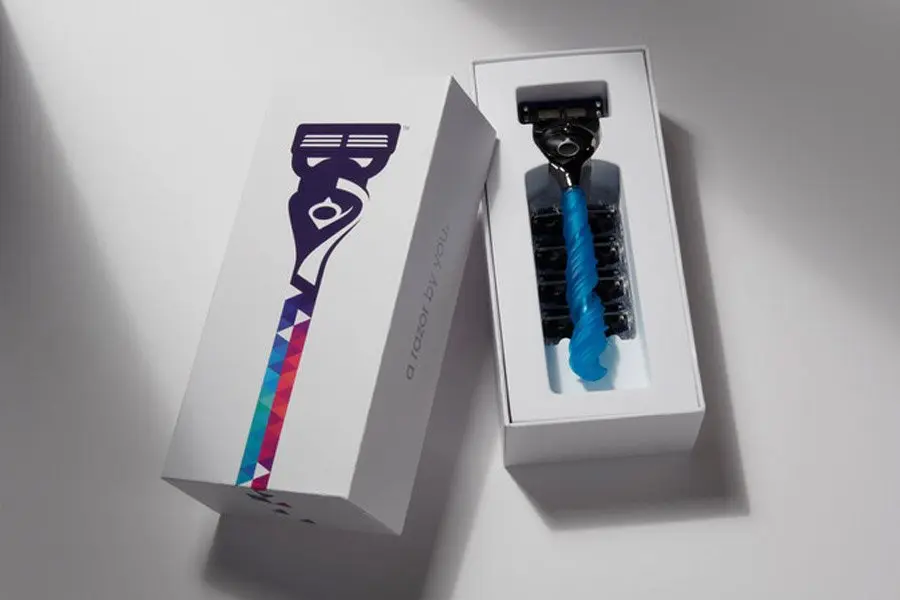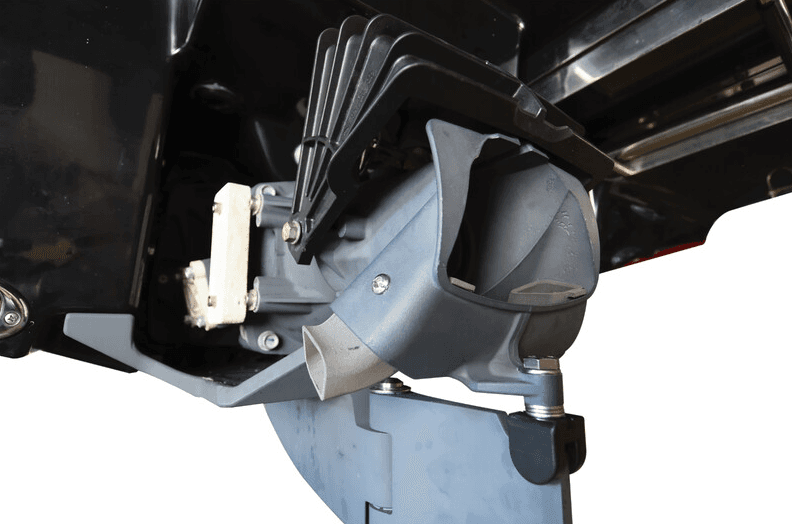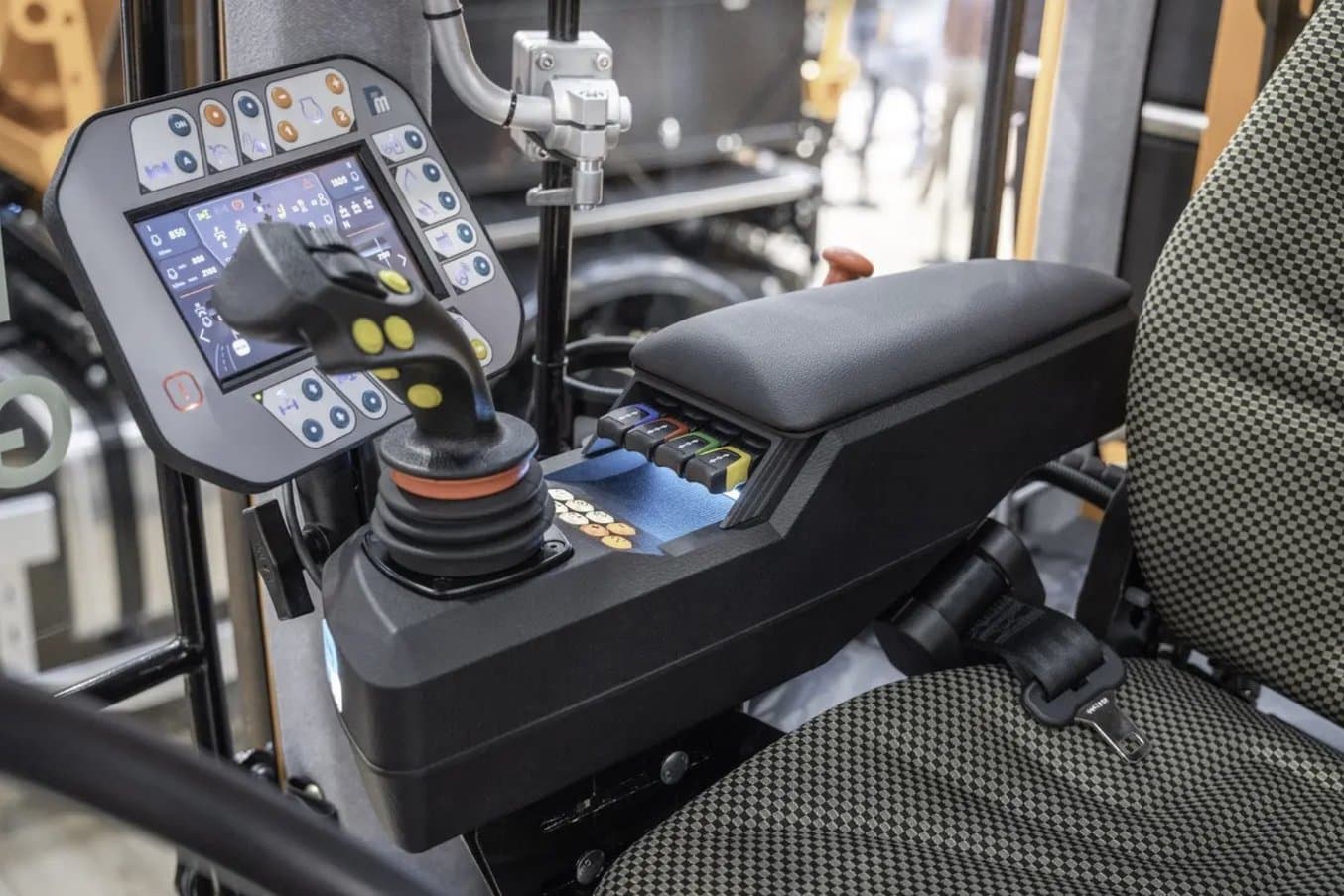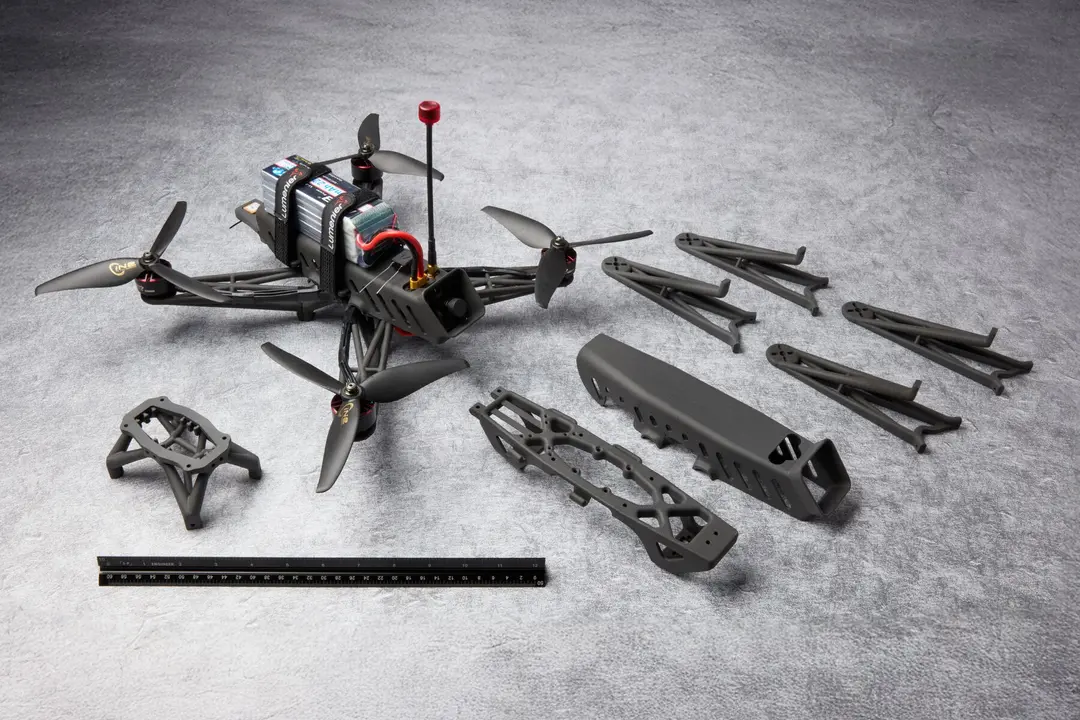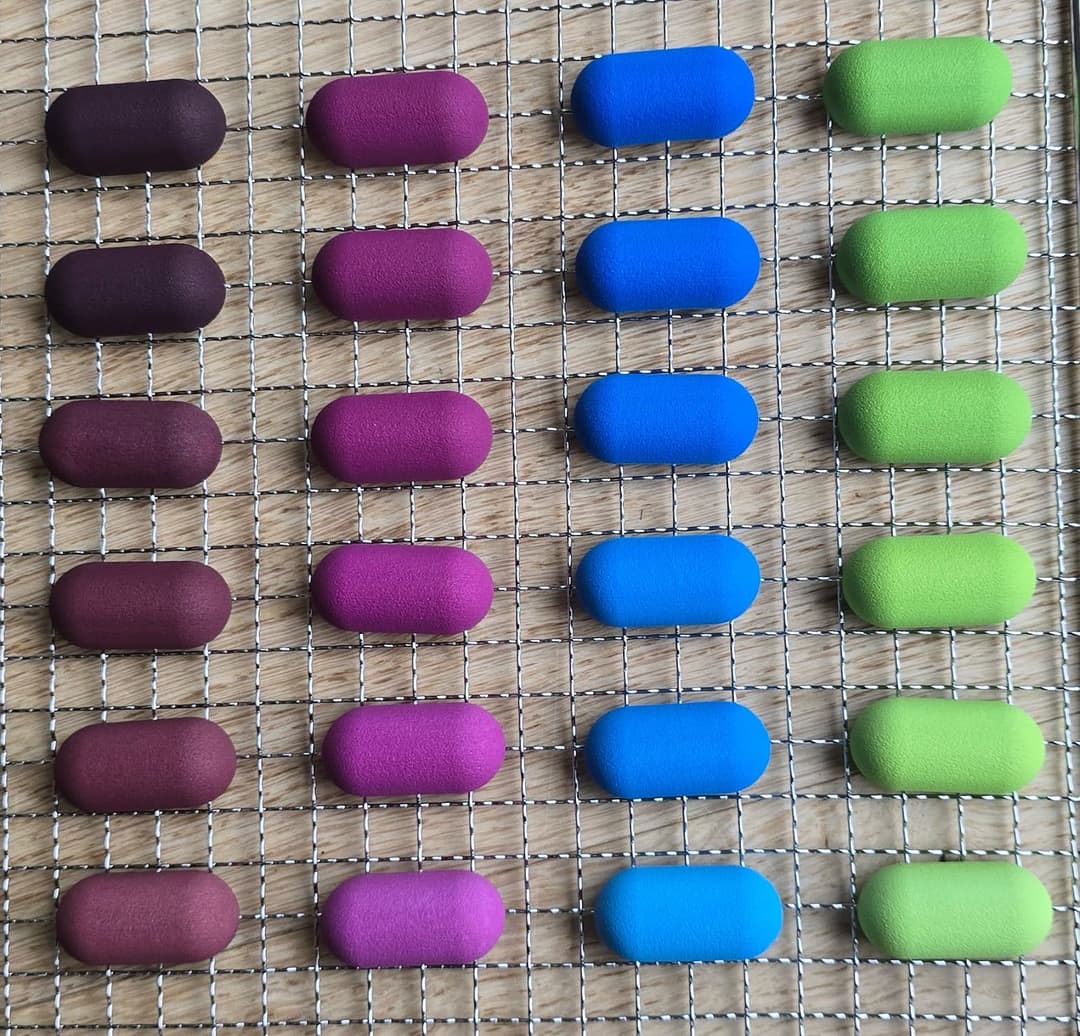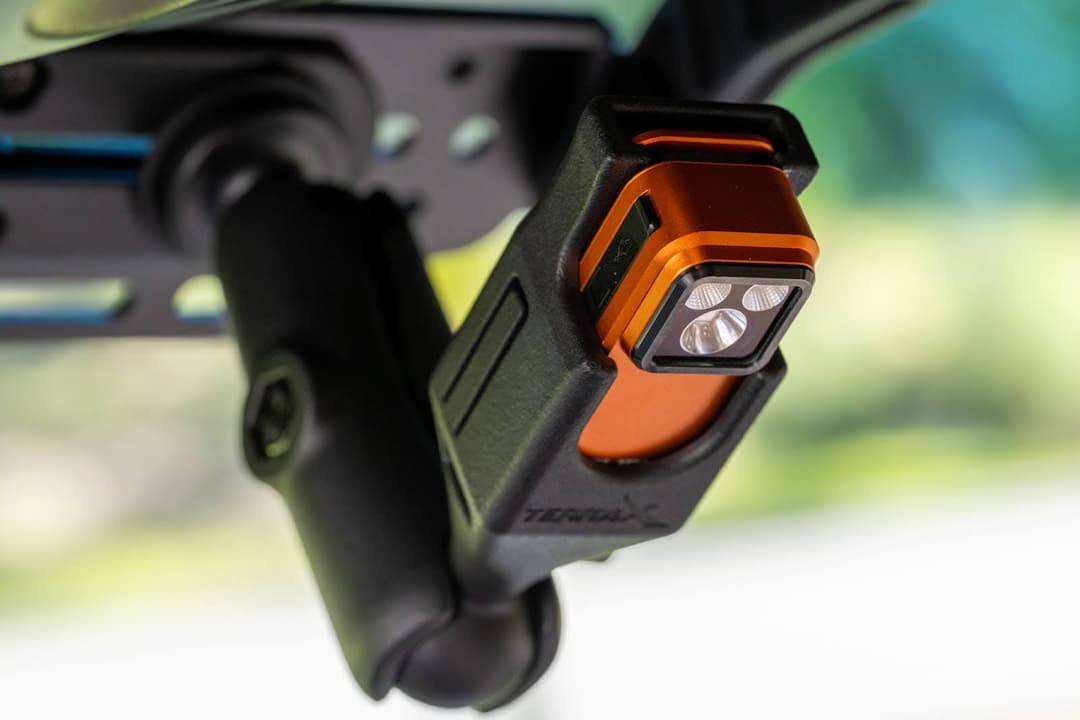
Modern manufacturing theory, tools, and best practices are focused on how to make thousands or millions of identical parts or products at a low cost per unit. Custom and low volume production require a completely different set of methods — and manufacturers are faced with unique challenges when trying to adapt mass production systems to fit.
Thanks to the rapid development of manufacturing methods and materials, however, there are now multiple technologies available that can enable the fabrication of these custom and low volume end-use parts and products rapidly and cost-efficiently.
This guide presents an overview of the different low volume manufacturing scenarios, as well as technologies and solutions for low volume end-use part production.
What is Low Volume Manufacturing?
Low volume manufacturing generally refers to production runs that yield between ten to tens of thousands of parts.
Today, most traditional manufacturing methods such as molding or forming are based on the concept of mass production: fabricating large quantities of identical goods. While these techniques are extremely cost-efficient for high-volume production (over 10,000 parts), they require standardization, expensive machinery, and tooling that rarely allow for product modifications.
Tooling for mass production processes like injection molding can easily cost $10,000+ and add weeks or months to production timelines. With mass production, manufacturers can offset these steep upfront capital expenses with high-volume orders, as cost per part decreases when the costs get distributed among thousands of parts. Mass manufacturing processes are geared toward producing identical parts in large quantities, restricting the ability to manufacture specialized or highly customized pieces economically.
In contrast, the fabrication of items based on unique specifications, also known as custom manufacturing or high-mix low-volume (HMLV) manufacturing, is traditionally performed manually in small workshops. Because of the high proportion of manual labor and the lower throughput, this results in a higher cost per part for custom products. For the same reasons, creating large quantities of individually custom-built goods, referred to as mass customization, has seldom been economically viable.

Over the last few decades, there has been a rapid development in manufacturing methods suitable for low volume production. Technologies like additive manufacturing (3D printing), CNC machining, and rapid tooling offer unique benefits for low volume production, custom manufacturing (high-mix low-volume manufacturing), and mass customization.
These benefits of low volume manufacturing include:
-
Lower costs: Eliminate excessive tooling costs that require minimum orders to be offset, reduce barriers to market entry, and encourage innovation.
-
Speed: Compress development timelines and reduce months’ long lead times for production to a couple of days or weeks to beat your competitors to the market.
-
Flexibility: Solve manufacturing challenges, respond to customer feedback, iterate products quickly, and implement design changes, all rapidly and without excessive costs.
-
Customization: Offer customization to customers and create products with unprecedented design freedom, including complex parts using organic, latticed, or intricate shapes without additional costs.
Control: Tighten supply chains and shorten lead times with local, on-demand production and keep inventories of parts or sub-components to the minimum to meet changing business needs rapidly.
Low Volume Production Scenarios
The drive for innovation, improved quality, and lower costs constantly pressures manufacturers as they seek to remain competitive and maximize profit. From bridging the gap between prototyping and mass production to reducing supply chain bottlenecks, let’s look at the various low volume production scenarios.

The Hasbro Selfie Series offers the first personalized, mass-customized action figures.
Customization
Today’s customers are spending more time and money to find products that fulfill their individual needs and requirements. More options for personalized, curated products and experiences are needed to meet demand. Low volume manufacturing can help companies scale personalized products for mass-market opportunities without the need to invest in costly tooling.
Businesses can rethink the way products are made and explore new business models that bring them closer to their individual customers’ needs, such as mass customization.
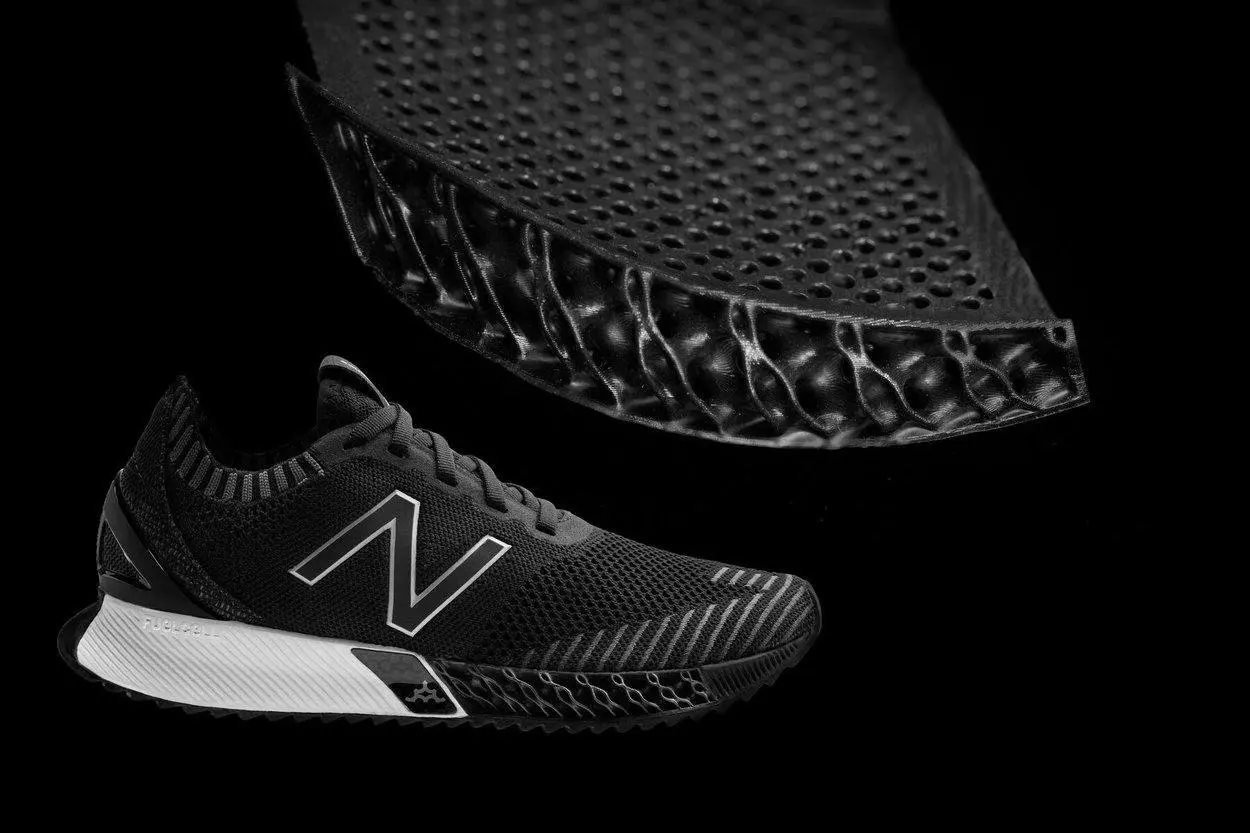
New Balance released a limited edition high-performance sneaker with 3D printed insoles.
Product Innovation
With innovative tools like 3D printing, designers can push the boundaries of design complexity, optimize structures, and tailor parts at no extra cost to develop unique products that are difficult to manufacture with traditional methods.
3D printers allow you to create complex shapes and parts, with features like overhangs, microchannels, and organic shapes, that would be costly or even impossible to produce with traditional manufacturing methods. This provides the opportunity to consolidate multi-part assemblies, reducing weight, alleviating weak joints, and cutting down on assembly time, unleashing new possibilities for design and engineering.

Tension Square produces an innovative medical device with 3D printing.
Bridge Manufacturing
Bridge manufacturing is a stage in the product development process that bridges the gap between prototyping and production. Businesses across all industries can leverage low volume production to quickly and affordably produce smaller batches of parts before transitioning to mass production. They can reduce mass-production risks by using pilot runs for product testing, pre-sales, or market validation before committing to expensive tooling for mass production.

3D printed COVID-19 test swabs produced in response to the global pandemic.
Supply Chain Resilience
Global supply chain bottlenecks increase lead times and represent a major threat to new product time-to-market, client satisfaction, and overall competitive advantage. Low volume manufacturing tools can be leveraged for temporary production, to quickly and affordably produce short runs during times of shortage. Businesses can reduce their reliance on third-party suppliers, withstand logistics disruptions and geopolitical issues, and answer rapidly to market changes by bringing manufacturing capabilities in-house.

Battle Beaver Customs’ Playstation 5 controllers with 3D printed internal parts.
Aftermarket Parts
Aftermarket manufacturers create end-use products that operate as components or additions to an existing product from the original equipment manufacturer (OEM). For these applications, introducing new innovative products while keeping up with OEM’s product updates is a major challenge.
By eliminating tooling, low volume manufacturing brings the agility needed to adjust aftermarket components on demand, both in design and production. Aftermarket companies can build complex geometries to improve product performance or tailor products to their customers. Low volume production helps to minimize inventory and ensure continued compatibility through the original equipment manufacturer’s updates.

Automotive supplier Brose has been evaluating 3D printing spare part production.
Spare Parts
When an OEM stops production of a particular product or model, they have to continue to stock thousands of parts to service clients who have legacy products and need replacements or repairs. If the OEM doesn’t create and store enough of these spare parts, large groups of customers who still use those discontinued models are often left without solutions. It is difficult for an OEM to calculate exactly how many parts to store — if they overestimate, they have to deal with waste and storage issues, and if they underestimate, buyers become disgruntled.
Leveraging technologies like 3D printing to produce spare parts in-house allows manufacturers to shift from a physical to a digital inventory. Only the CAD models are stored to produce on-demand parts and replace a lost or damaged item.
Technologies for Low Volume Production
Additive Manufacturing (3D Printing)
3D printing has been ubiquitous in prototyping and product development for decades. Now, this maturing technology is entering widespread use in manufacturing. In the product development process, manufacturers are already leveraging the flexibility of 3D printing for producing internal tools, such as jigs, fixtures, and other manufacturing aids, or even rapid tooling such as molds for injection molding or thermoforming.
Recent advances in machinery, materials, and software open opportunities for producing high-precision, functional 3D prints that can stand in for end-use parts—parts that are sold to and used by the final customer — empowering businesses to bring innovative products to market and make small and mid-scale manufacturing accessible.
3D printers are most commonly used to produce plastic parts — metal 3D printers are also available, but at a substantially higher cost. There are many different types of 3D printers, the most common processes for producing plastic parts being: selective laser sintering (SLS), stereolithography (SLA), and fused deposition modeling (FDM).
As 3D printers require no tooling and minimal setup time for a new design, the cost of producing a custom end-use part is negligible in comparison with traditional manufacturing processes.
Additive manufacturing processes generally have a higher cycle time and are more labor-intensive than manufacturing processes commonly used for mass production, but they represent a substantial leap in productivity compared to traditional manual low volume production and fabrication processes. As 3D printing technologies improve, the cost per part will continue to fall, opening up an even wider range of low- to mid-volume applications.
Most traditional manufacturing processes require expensive industrial machinery and skilled operators, forcing many companies to outsource their production to dedicated facilities. 3D printing, however, enables in-house production. Compact desktop or benchtop 3D printing systems for creating plastic parts are affordable, require very little space and no special skills, enabling professional engineers, designers, and manufacturers to speed up iteration and production cycles from months to just a few days.
Manufacturing Process
- Design: Design your model in CAD, or create a model based on a 3D scan of an existing model, an MRI scan, or an intraoral scan.
- Print setup: Print preparation software is used for orienting and laying out models within a printer’s build volume, adding support structures (if needed), and slicing the supported model into layers.
- Printing: Choose the right technology and material, and 3D print the part on a 3D printer.
- Post-processing: When printing is complete, parts are removed from the printer, cleaned or washed, post-cured (depending on the technology), and the support structures removed (if applicable). Parts can be painted, coated, or post-processed further with other finishing techniques.
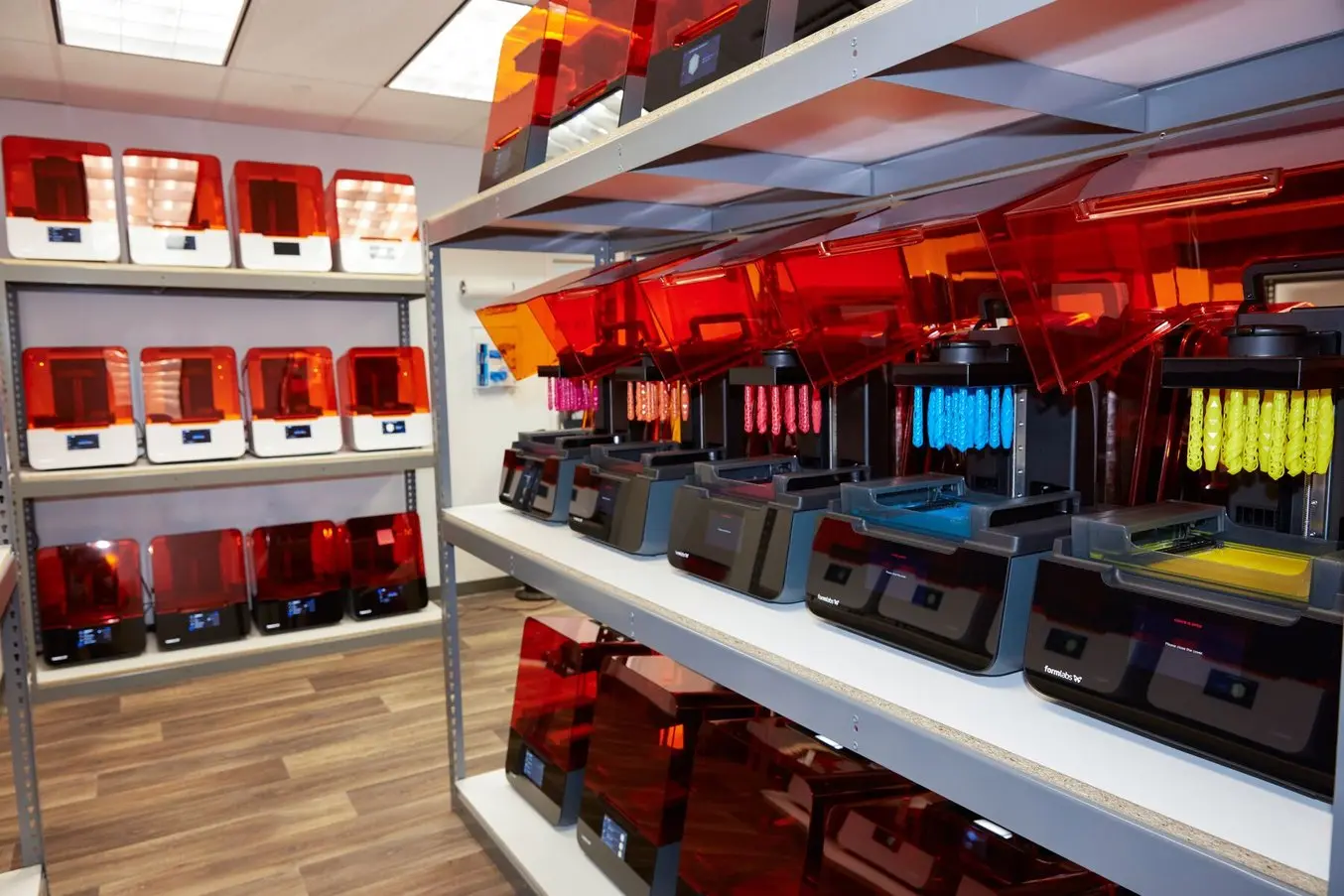
How to Unlock Low Volume Production and Custom Manufacturing with 3D Printed End-Use Parts
Watch this webinar to learn how to achieve custom manufacturing and low volume production of end-use parts quickly and cost-effectively with 3D printing.
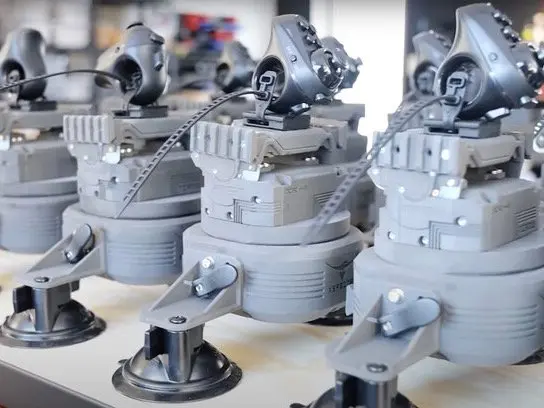
Stress Testing 3D Printed Parts for End-Use Applications
This white paper presents Formlabs 3D printing hardware and material solutions for end-use part production. It documents various users' case studies and includes stress testing results to verify the suitability of 3D printing materials for end-use applications.
CNC Tools
Computer numerical control (CNC) tools are subtractive manufacturing processes. They start with solid blocks, bars, or rods of plastic, metal, or other materials that are shaped by removing material through cutting, boring, drilling, and grinding.
CNC tools include CNC machining, which removes material by either a spinning tool and fixed part (milling) or a spinning part with a fixed tool (lathe). Laser cutters use a laser to engrave or cut through a wide range of materials with high precision. Water jet cutters use water mixed with abrasive and high pressure to cut through practically any material. CNC milling machines and lathes can have multiple axes, which allows them to manage more complex designs. Laser and water jet cutters are more suited for flat parts.
CNC tools can shape parts from plastics, soft metals, hard metals (industrial machines), wood, acrylic, stone, glass, and composites. They’re ideal for producing custom or low-volume end-use parts, structural parts, and tooling for a wide range of industries.
Compared to additive manufacturing tools, CNC tools are more complicated to set up and operate, while some materials and designs might require special tooling, handling, positioning, and processing. This makes them costly for one-off parts compared to additive processes and better suited for small production runs.
Machining is ideal for low volume manufacturing applications that require tight tolerances and geometries that are difficult to mold, such as pulleys, gears, and bushings. CNC machining has low to moderate setup costs, and can produce high-quality components with short lead times from a wide range of materials.
Machining processes have more part geometry restrictions than 3D printing. With machining, cost per part increases with part complexity. Undercuts, pass-throughs, and features on multiple part faces all increase costs. Machining processes require allowances for tool access and certain geometries, like curved internal channels, are difficult or impossible to produce with conventional subtractive methods.
Manufacturing Process
- Design: Design your model in CAD, or create a model based on a 3D scan of an existing model, an MRI scan, or an intraoral scan.
- Job setup: CNC machines require an intermediary step of generating and validating toolpaths (CAD to CAM). Toolpaths control where the cutting tools move, at what speeds, and any tool changeovers.
- Machining: The toolpaths are sent to the machine where the given subtractive process begins. Depending on the desired shape of the final product, the workpiece may need to be set in a new position so that the tool head can reach new areas.
- Post-processing: After manufacture, the part is cleaned and deburred, trimmed, and can be post-processed further with other finishing techniques.
Rapid Tooling
Rapid tooling is the group of techniques used to fabricate tooling fast, at low cost, and efficiently for traditional manufacturing processes like injection molding, thermoforming, or casting to create parts on a short timeline or in lower quantities.
Conventional tooling is most commonly produced out of durable metals using technologies such as machining and metal casting. However, these processes are expensive and better suited for large-scale production cycles. When used for tooling iterations or to produce tooling that would be used to manufacture only small batches of parts, costs rise and production timelines extend dramatically.
Incorporating rapid tooling into the product development process enables manufacturers to validate design and material choices prior to transitioning to mass production to accelerate product development, iterate quickly, and bring better products to market. Rapid tooling empowers engineers to use the actual production-grade materials to evaluate how the parts will perform in real-world applications and produce limited volumes of products for beta and validation testing. Rapid tooling can also help troubleshoot the manufacturing process before investing in expensive production tooling.
Rapid tooling also provides means to produce custom or limited series of end-use parts using traditional manufacturing processes that would be prohibitively expensive using conventional tooling. This allows manufacturers to test the market for new products, offer a wider range of products, or customize parts based on customer needs.
Rapid tooling can be used to support a variety of traditional manufacturing processes to produce plastics, silicone or rubber parts, composites, and even metal parts.
Manufacturing Process
- Design: Design the mold, pattern, die, or master tool in CAD software.
- Producing the tooling: Manufacture the tooling with a 3D printer or a CNC tool, or create molds or tools based on a master pattern.
- Manufacturing: Insert the rapid tooling in your machine or use the pattern in your workflow and carry out the production process.
- Post-processing: Perform any necessary post-processing to achieve the quality finish of an end-use part.
Low Volume Production Technologies Comparison
| 3D Printing | CNC Tools | Rapid Tooling | ||
|---|---|---|---|---|
| Technologies | Selective laser sintering (SLS), stereolithography (SLA), fused deposition modeling (FDM), metal 3D printing | CNC machining (mill or lathe), laser cutting, water jet cutting | Injection molding, thermoforming, overmolding and insert molding, compression molding, casting, sheet metal forming | |
| Materials | Plastics, metals (limited), silicone and rubber-like parts | Plastics, metals, wood, acrylic, stone, glass, and composites | Plastics, metals, composites, silicone and rubber parts | |
| Form | High degree of freedom | Medium degree of freedom | Medium degree of freedom | |
| Lead time to final parts (in house) | One to two days | One day to a week | One day to a week | |
| Cycle time | < 1 hour to multiple hours, depending on part size | < 1 hour to multiple hours, depending on part size, design, and complexity | Couple of seconds to multiple hours, depending on process and the material | |
| Setup cost | $ | $$ | $-$$ | |
| Cost per part | $$-$$$ | $$$$ | $$ |
In House Production vs. Contract Manufacturing
While manufacturing traditionally involves contract manufacturers and a long chain of suppliers, low volume manufacturing tools also allow companies to bring production in house.
Outsourcing production to service bureaus or labs is recommended when you require just a few parts occasionally, and for parts that are large or call for non-standard materials. Service providers like Hubs, Protolabs, Fictiv, or local service bureaus offer manufacturing and low volume production services on demand. These bureaus typically have multiple technologies available, including additive and subtractive processes, as well as rapid tooling. They can also provide advice on various materials and offer value-added services such as design or advanced finishing.
The main downsides of outsourcing to service providers are cost and lead time. One of the greatest benefits of low volume manufacturing is its speed compared to traditional manufacturing methods, which quickly diminishes when the outsourced parts take a week or multiple weeks to arrive. Outsourcing the manufacturing of low volume parts is also often very expensive. Depending on the number of parts and volume, a business can often break even within a few months by simply investing in a 3D printer and printing in house.
With desktop and benchtop 3D printers, companies can pay for just as much capacity as their business needs, and scale production by adding extra units as demand grows. By using multiple 3D printers, you also get the flexibility to print parts in different materials simultaneously. Service bureaus can still supplement this flexible workflow for larger parts or unconventional materials.

Outsourcing vs. In-House: When Does it Make Sense to Bring SLS 3D Printing In-House?
In this white paper, we evaluate the value proposition of bringing SLS 3D printers in-house, in comparison with outsourcing SLS parts from a service bureau.
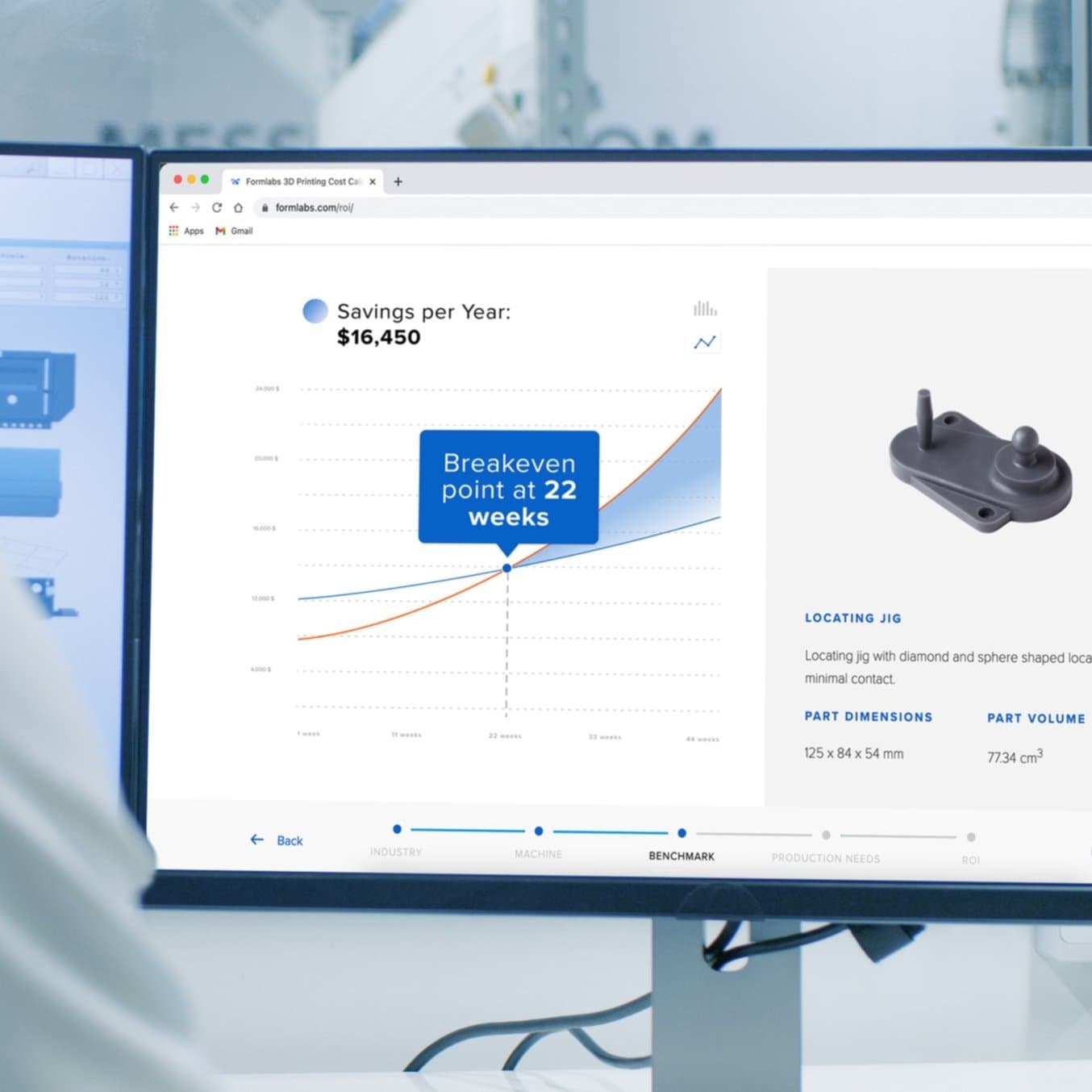
Calculate Your Time and Cost Savings
Try our interactive ROI tool to see how much time and cost you can save when 3D printing on Formlabs 3D printers.
Get Started With Low Volume Production
Freed from the tooling constraints of traditional methods, additive manufacturing is a powerful solution to produce low volume end-use parts with minimal lead time. In-house 3D printing enables businesses to take control of their manufacturing, reducing production time, costs, and risks.
Watch our webinar to learn how to achieve custom manufacturing and low volume production of end-use parts quickly and cost-effectively with 3D printing and explore Formlabs’ range of professional 3D printing solutions.
Have an idea for leveraging low volume production at your business, but don’t know where to start? Get in touch with a Formlabs Solution Specialist to discuss how you can piece together an ideal workflow.
